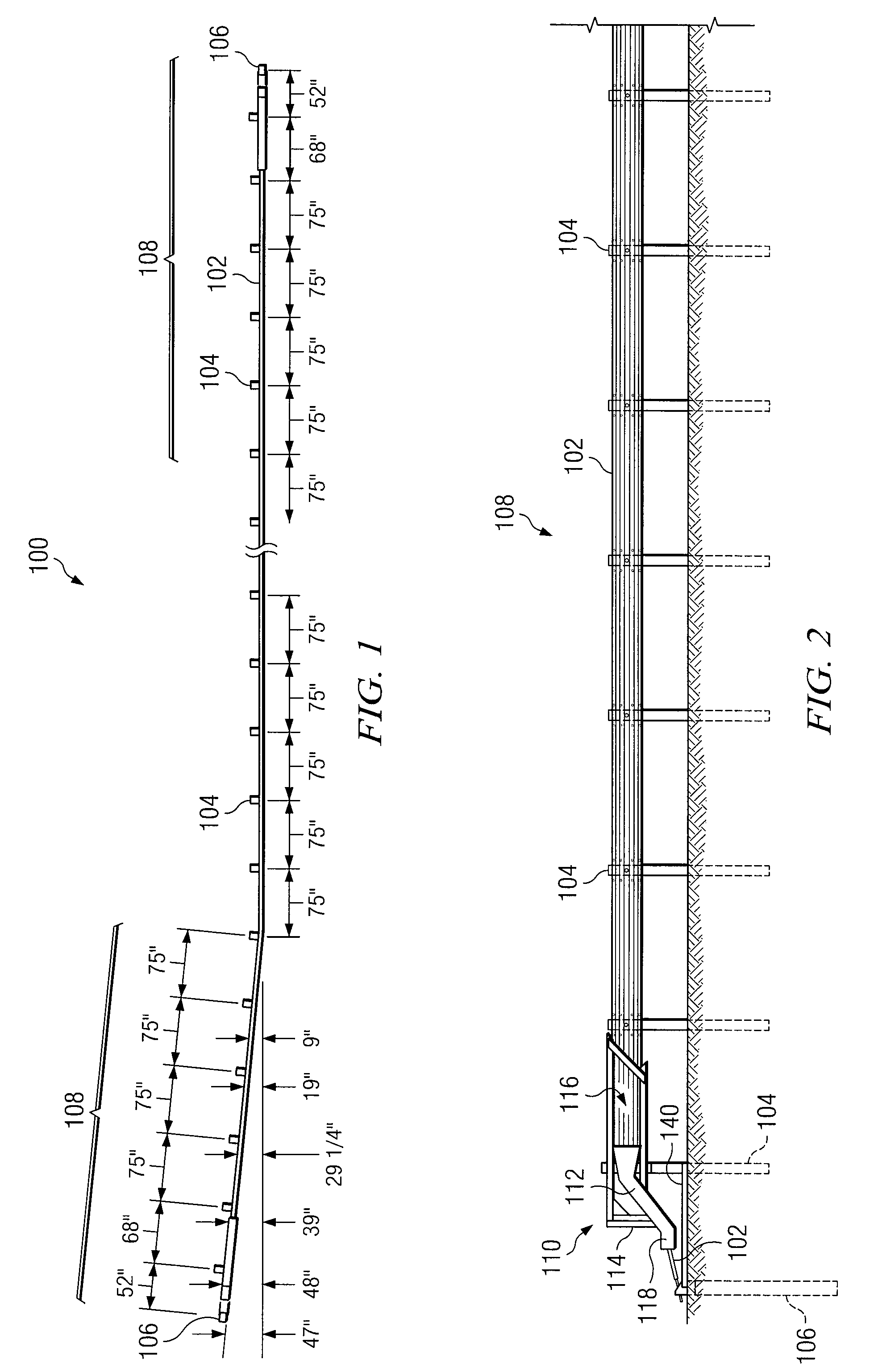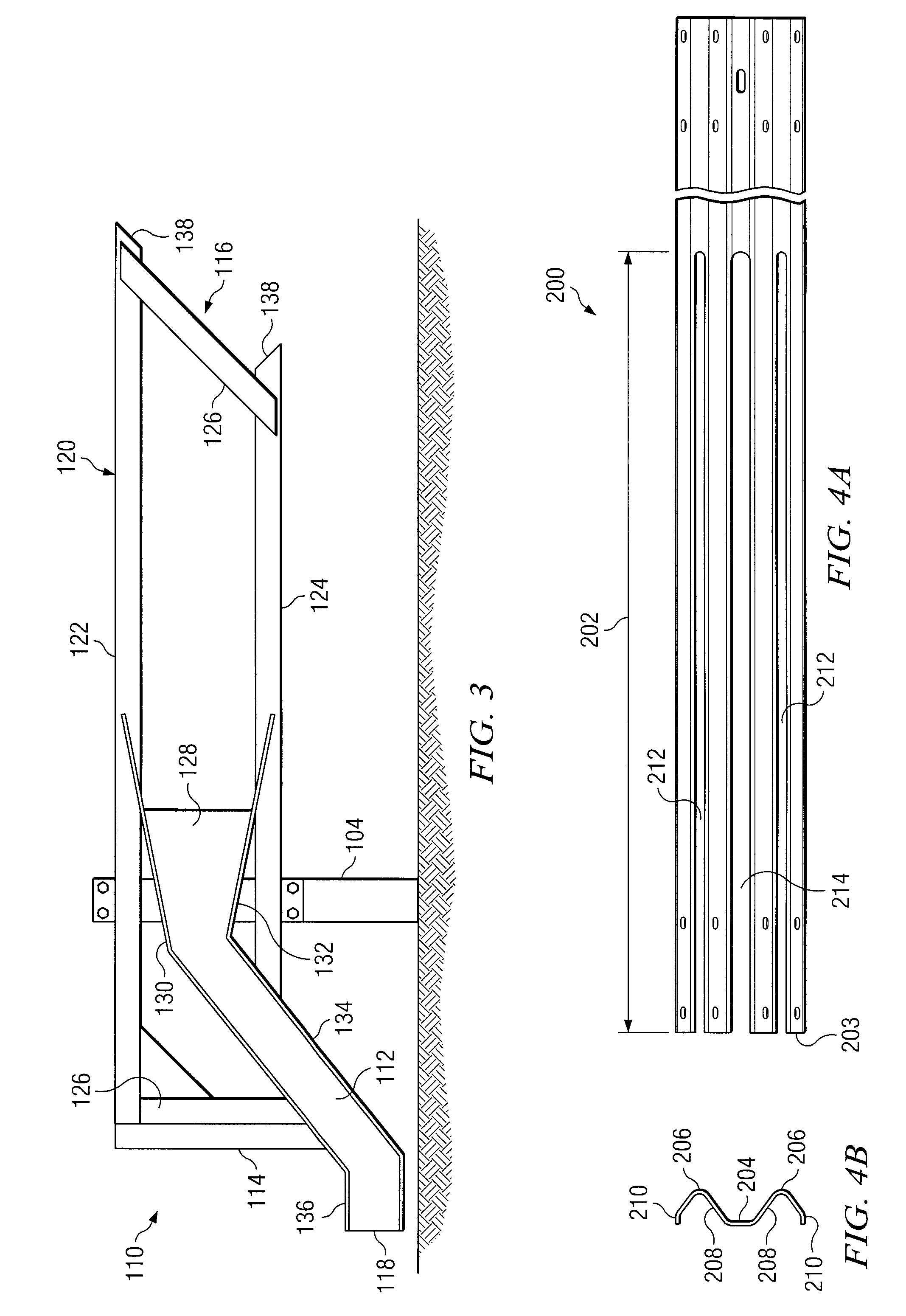Tension guardrail terminal
a guardrail terminal and tension technology, applied in roadway safety arrangements, roadways, construction, etc., to achieve the effect of dissipating impact energy, dissipating impact energy of a vehicle colliding, and releasing tension
- Summary
- Abstract
- Description
- Claims
- Application Information
AI Technical Summary
Benefits of technology
Problems solved by technology
Method used
Image
Examples
Embodiment Construction
[0023]Existing guardrail end treatments have proven to be unsafe for some collision conditions that happen on the highway, sensitive to installation details, and / or very costly. However, the end treatment described below is a safety treatment for the ends of a W-beam guardrail that provides a higher level of performance over a wider range of collision conditions and reduces end treatment costs and the number of injuries and deaths associated with guardrail terminal accidents. The described system maintains the tension in the guardrail beam element during both end-on and re-directive type impacts. When the system is impacted in the reverse direction near the terminal end, however, the anchorage system may release to prevent vehicle instability or excessive deceleration.
[0024]FIG. 1 illustrates a guardrail safety system 100 that incorporates certain aspects of the present invention. Guardrail system 100 may be installed adjacent a roadway, to protect vehicles, drivers and passengers f...
PUM
 Login to View More
Login to View More Abstract
Description
Claims
Application Information
 Login to View More
Login to View More - R&D
- Intellectual Property
- Life Sciences
- Materials
- Tech Scout
- Unparalleled Data Quality
- Higher Quality Content
- 60% Fewer Hallucinations
Browse by: Latest US Patents, China's latest patents, Technical Efficacy Thesaurus, Application Domain, Technology Topic, Popular Technical Reports.
© 2025 PatSnap. All rights reserved.Legal|Privacy policy|Modern Slavery Act Transparency Statement|Sitemap|About US| Contact US: help@patsnap.com



